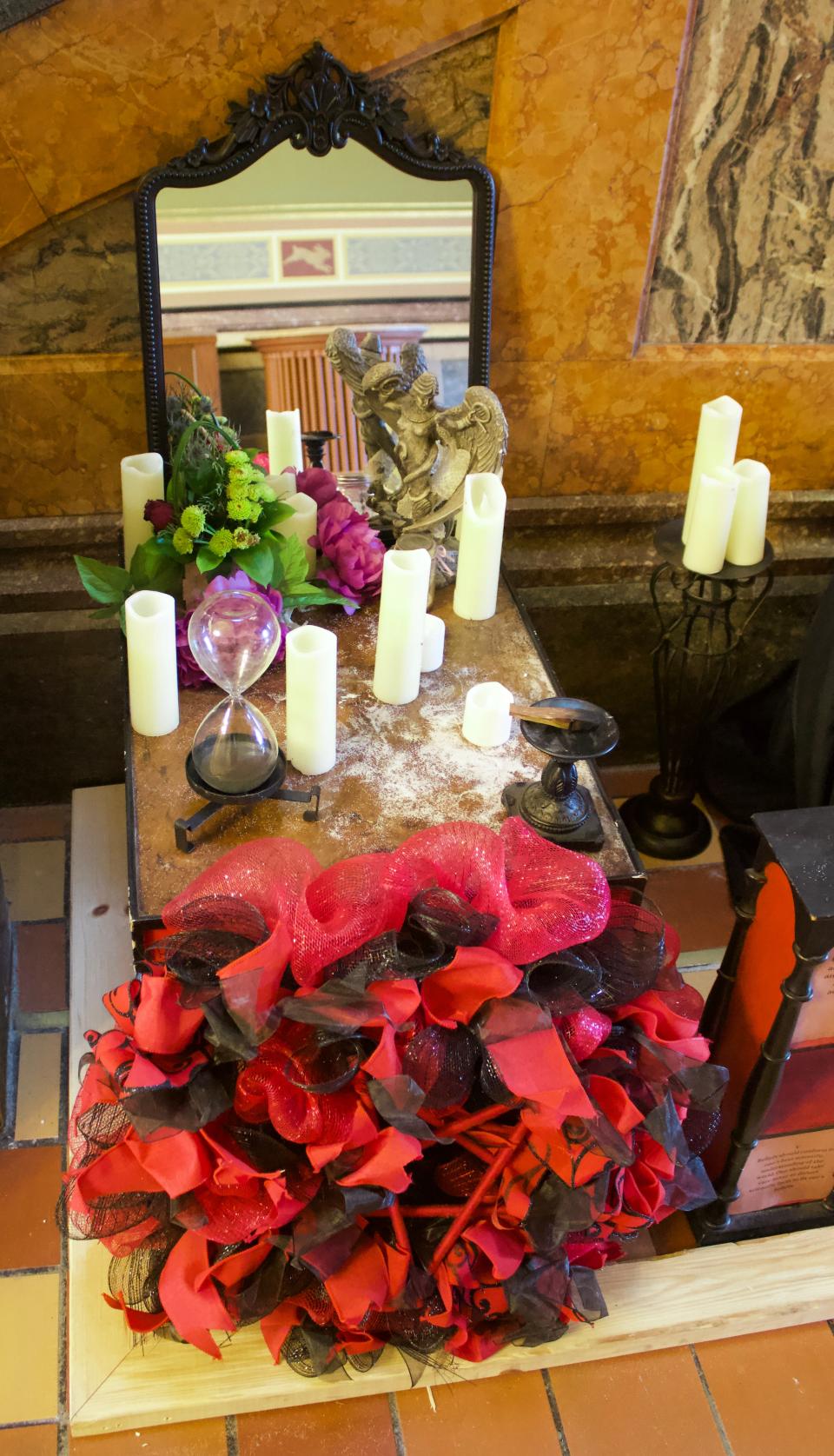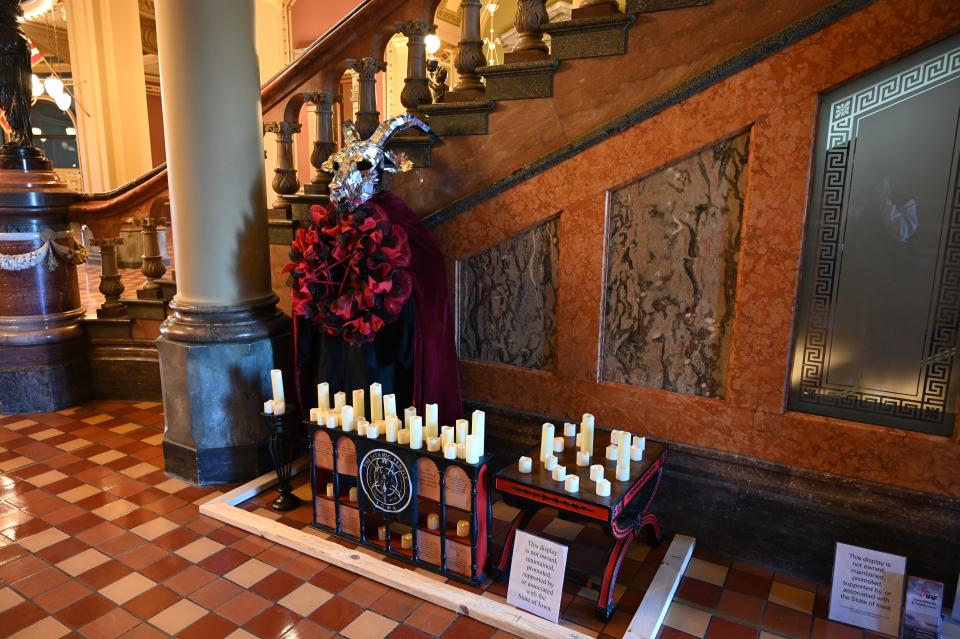Spirits of the season: What to make of the Satanic Temple figure at the Iowa Capitol?
- Oops!Something went wrong.Please try again later.
At the close of the fall semester, one of my media ethics students sent me a link about the Satanic Temple display in the Iowa Capitol, writing, “I think we would both agree that it is within one's rights to worship whatever higher power they choose.” Nevertheless, he wondered whether the display indirectly celebrated evil and a lack of morals in society.
Professors typically shun such questions, as responding might unintentionally offend the student or indicate their own faith or lack thereof. But such mentorship is important as our advisees try to make sense of an increasingly bizarre world.
In my reply, I referenced Lucien Greaves, spokesman and co-founder of the Satanic Temple, who asserted that the display was not meant to insult Christians. Rather, his organization encourages benevolence and empathy, rejects “tyrannical authority” and opposes injustice.
People may disagree with the symbolism behind it, Greaves noted, but should acknowledge the “greater evil” of allowing the government “to pick and choose between forms of religious expression.”
Symbolism is the freight train of history, and the image in the Rotunda has a long one.
Gov. Kim Reynolds issued a statement about the display, noting “the best response to objectionable speech is more speech.” She encouraged others to recognize the imagery of the nativity scene, also on display, as “the true reason for the season.”

We are a country of many faiths, reasons and seasons.
When I first saw the Satanic figure, I associated it with the Greek god Pan, half man, half goat, with hooves and tail. Pan was also a satyr and symbol of fertility. “The depiction at the Rotunda may be based on him,” I told my student. “We still use the word ‘panic’ based on this god.”
Others responded with degrees of panic. Republican presidential candidate Ron DeSantis blamed the Trump administration for giving the Satanic Temple legal status as a religion. A former congressional candidate from Mississippi destroyed the display. “My conscience is held captive to the word of God, not to bureaucratic decree,” Michael Cassidy reportedly said. “And so, I acted.”
The vandalized figure was not Pan but the pagan idol Baphomet. Its image was created by the 19th-century French occultist Éliphas Lévi, said to be inspired by Pan and ancient mythology.
I had heard the name Baphomet before, not in connection with Satan, but with the Knights Templar, a military order that protected Christian pilgrims in the Holy Land. Members swore oaths of poverty and chastity.
My parents hailed from the Mediterranean island of Malta, a launch pad for the crusades. I was reared to revere Christ and to respect the Templars, known by their distinctive red cross on a white mantle — the primary colors of the Maltese flag.
In 1307, Philip IV of France arrested the Templars on suspicion of their worshipping Baphomet — the iconic figure in the Iowa Capitol. He tortured and accused them of engaging in lewd acts, confiscating their wealth and power.
The eight-pointed Maltese cross remains a powerful symbol. So much so that it is one of the most popular tattoos. Its legacy is associated with The Sovereign Order of Malta — not to be confused with the Templars. The Order of Malta dates back to the Knights Hospitaller, a chivalric group founded about 1099 by the Blessed Gerard in the Kingdom of Jerusalem.

The Order is active in 120 countries “caring for people in need through its medical, social and humanitarian works,” especially helping those in the midst of armed conflicts. It has been active in the Ukraine, providing beds, medicine, meals and more to the populace. It issued a powerful “statement on the current violence in the Holy Land,” condemning terrorism and calling for an end to violence.
The points of its famed cross reflect the virtues of Jesus’s Beatitudes (Matthew 5:3-12) and represent the Order’s mission: loyalty, piety, honesty, courage, honor and glory, and solidarity towards the poor and the sick.
For me, that is the true spirit of the season.
I was not offended by the Satanic display but could see how others might be. Satan as symbol carries with it all manner of messages at odds with the holiday spirit of brotherhood, charity and goodness. Baphomet also may not be the best representation for a group that embraces altruism and free-thinking. And the beheading of the figure in the Rotunda would be an act, perhaps, that a Templar might do.
The governor was right about free speech and more speech. (This is more speech, by the way.)
My student’s follow-up email inspired me. “Phenomenal response in regard to the article! That's such a grounded perspective that will be at the forefront of my thoughts as I continue to expand my knowledge on the topic.”
May we all live up to his aspiration as we debate this and other divisive views at the holiday table.
Michael Bugeja is a distinguished professor of liberal arts and sciences at Iowa State University. These views are his own.
This article originally appeared on Des Moines Register: Satanic Temple altar at Iowa Capitol: Digging into spirits on display

